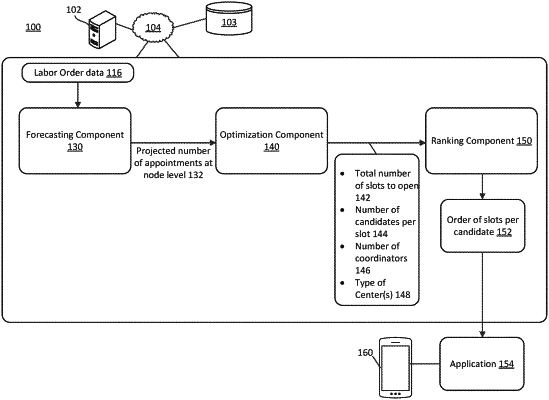| CPC G06Q 10/063118 (2013.01) [G06N 5/04 (2013.01); G06N 20/00 (2019.01); G06Q 10/1053 (2013.01); G06Q 30/0205 (2013.01)] | 20 Claims |

|
1. A method comprising:
receiving labor order data specifying a target number of new hires;
determining annotated training data comprising a target number of new hires, first candidate fallout data, first seasonality data, and first incentive data, wherein the annotated training data is annotated with a first number of new hire appointments;
determining, for the annotated training data by inputting the target number of new hires, the first candidate fallout data, the first seasonality data, and the first incentive data into a first machine learning model comprising a neural network, a prediction of a second number of new hire appointments;
determining a gradient using a difference between the first number of new hire appointments and the second number of new hire appointments;
updating weights of the neural network using the gradient to generate a first trained machine learning model;
predicting, by the first trained machine learning model, a third number of new hire appointments to offer based at least in part on the labor order data, historical candidate fallout data, seasonality effects, and incentives offered;
allocating the third number of new hire appointments to respective time slots based at least in part on candidate preferences, geographical practices, weather condition data, historical candidate arrival pattern data, and the third number of new hire appointments predicted by the first trained machine learning model, wherein the third number of new hire appointments are allocated to respective time slots using a combination of mathematical models; and
sending data to a first application effective to display a list of available new hire appointment time slots of the respective time slots.
|